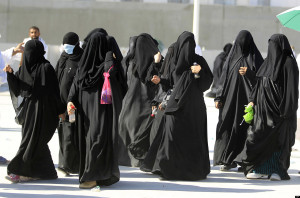
In regard to this, a very revealing interview with one of the leading Iranian analysts on the problems of the Arab world, Muhammad Sadeq Al-Husseini, was published as an editorial in the August 2013 edition of the newspaper Khabar, where he “simulated” a further resolution of the “Shiite question” in Saudi Arabia that would be most consistent with Tehran’s interests. He believes that as long as “the Shiites are at serious risk”, they “may revolt at any time.” He could see the rest of the script developing as follows: “If that day comes, and jihad is declared, major changes will occur on the Arabian Peninsula. Bahrain, Yemen and other Shiite areas, united with the Ismailis, which total 75 million people, could then create a powerful empire.” Of course, this script is, for the moment, only a fantasy. But the Saudis are not discounting it as a possibility.
In fact, just as they believe in Riyadh, he revived the idea of a “Shiite Arab state”, including in this “pan-Shiite zone” — which should fall under the influence of Tehran — even the Ismaili “Yemeni corner”, which includes, apart from Yemen itself, the Saudi region of al-Asir, as well as the Saudi province of Najran. To that end, recall that in contrast to the Shiites of the Eastern Province — the Twelvers or Ithna’Ashariyyah, the indigenous population of Najran mostly belongs to a special branch of “extreme” Shiites — the so-called “moderate” Ismailis, or Mustaali. Saudi and Yemeni Mustaali are currently part of a unified Ismaili community, the Sulaymani Bohra, which has its followers in India and Pakistan as well. Unlike the Shiites of the Eastern Province, the religious structure of the Ismaili community is built on tribal organisation. The Ismailis are a tribe of Banu Yam, whose residence area also includes part of the Yemeni territory that is adjacent to the Saudi border. Apart from this province, small Ismaili groups also live in settlements around the city of Dammam – the main city of the Eastern Province. It is worth noting that one of the characteristics of the province of Najran is its special position in the administrative structure of the kingdom: during the unification of the country, founder and King Abdul Aziz, unable to completely subjugate the local warlike mountain tribes, eventually made an agreement with them in 1934. According to this agreement, a special autonomous status was assigned to the province, which provided, above all, religious freedom for the Ismaili population. The number of Ismailis living in Saudi Arabia, according to different data, varies significantly from 408,000 (according to the Saudi Census of 2004) to 1 million (according to several Shiite sources). However, these estimates are largely approximate.
The exact number of Ismaili followers in Saudi Arabia is difficult to calculate because of its nature as a closed sect. Compared to the Ithna’Ashariyyah, the Ismaili tend to hide their religious affiliation, putting into practice one of the main principles of their faith: taqiyya (wise concealment). This way, as they publically visit Salafi mosques and participate in public prayer, Ismailis who live in other cities of the kingdom do not, in reality, break any ties with their community, as they preserve their faith in secret.
It is precisely for this reason that the influence of the official Salafi clergy has not had much effect on them, and cases of conversion to the official Hanbali schools of thought are very rare, because for members of the community this means breaking and losing all ties with the tribe and with their sheikhs. However, the Salafi Ulema never abandoned their plans for dealing with the Ismailis and continue to actively proselytise in Najran, drawing on all possible forms of influence. In 2008, a well-known anti-Shia fatwa reaffirmed an extremely negative position on Ismaili doctrine in a publication by a group of “implacable” ulema, calling the Ismailis, alongside the Syrian Nusayris, or Alawites, “the worst of these Batiniyya communities”.
(To be continued)
Petr Lvov, Doctor of Political Sciences, exclusively for the “New Eastern Outlook. online magazine.
